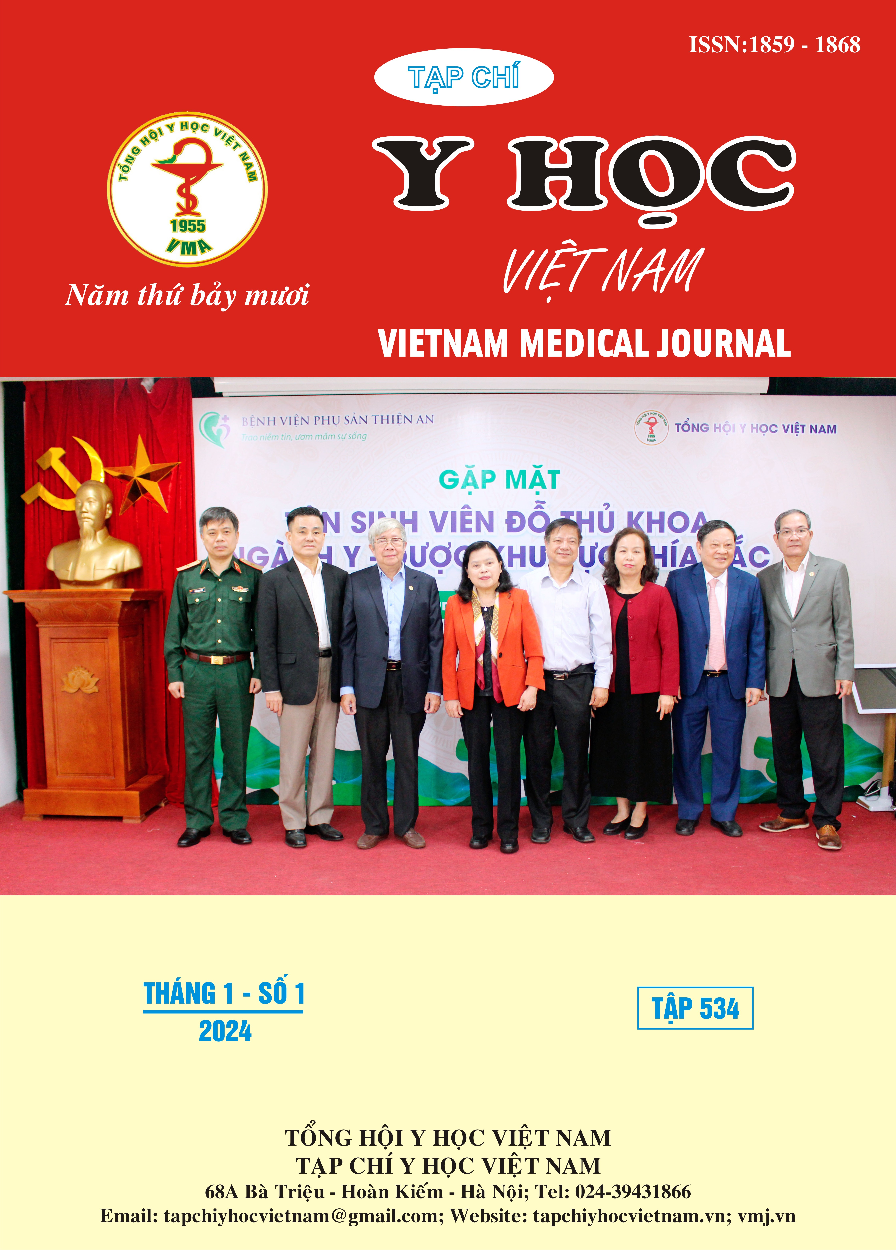CHARACTERISTICS OF PNEUMONIA REQUIRING RESPIRATORY SUPPORT IN CHILDREN INFECTED WITH SARS-CoV-2 AT CHILDREN'S HOSPITAL No2 IN 2021-2022
Main Article Content
Abstract
Objectives: To describe the clinical, laboratory and treatment characteristics of pneumonia requiring respiratory support in children infected with SARS-CoV-2. Methods: A case series of 127 children infected with SARS-CoV-2 diagnosed pneumonia requiring respiratory support at the Children's Hospital No2 from January 1st, 2021 to December 31st, 2022. Results: Among 127 children infected with SARS-CoV-2 who develop pneumonia and require respiratory support, children 60 months and older accounted for the highest proportion (48%). The male/female ratio was 1.7/1. Children with underlying diseases accounted for 40.2% and obesity 16.7%. The spectrum of SARS-CoV-2 infection severity included moderate diseases (22.8%), severe diseases (56.7%), and critical diseases (20.5%).The most common clinical symptoms and signs were chest indrawing (92,1%), fever (85%), cough (81.1%), and tachypnea (63.8%). The median SpO2 level was 86.9%. No pulmonary rales recorded 70.1%. There were 34.6% of children whose lymphocyte count decreased with age. The elevations in D-dimer, Ferritin, CRP, AST and ALT occurred in 79.3%, 75.3%, 43.7%, 18.1% and 7.9% of children, respectively. The most common lesions on chest X-ray were pulmonary consolidation (41.7%), alveolar infiltrates (33.9%), and interstitial infiltrates (22.8%).The methods of respiratory support included nasal cannula (31.5%), NCPAP (41.7%), and mechanical ventilation (26.8%). The median time requiring respiratory support was 6.8 days. There were 24 children who died (18.9%). Conclusions: Children infected with SARS-CoV-2 who develop pneumonia and require respiratory support have a high fatality rate.
Article Details
References
2. Fuller C. C., Cosgrove A., Shinde M., et al. Treatment and care received by children hospitalized with COVID-19 in a large hospital network in the United States, February 2020 to September 2021. PLoS One. 2023; 18 (7): e0288284.
3. Gotzinger F., Santiago-Garcia B., Noguera-Julian A., et al. COVID-19 in children and adolescents in Europe: a multinational, multicentre cohort study. Lancet Child Adolesc Health. 2020; 4 (9): 653-661.
4. Graff K., Smith C., Silveira L., et al. Risk Factors for Severe COVID-19 in Children. Pediatr Infect Dis J. 2021; 40 (4): e137-e145.
5. Irfan O., Muttalib F., Tang K., et al. Clinical characteristics, treatment and outcomes of paediatric COVID-19: a systematic review and meta-analysis. Arch Dis Child. 2021; 106 (5): 440-8.
6. Jia Z., Yan X., Gao L. et al. Comparison of Clinical Characteristics Among COVID-19 and Non-COVID-19 Pediatric Pneumonias: A Multicenter Cross-Sectional Study. Front Cell Infect Microbiol. 2021; 11: 663884.
7. Sacco V., Rauch B., Gar C., et al. Overweight/obesity as the potentially most important lifestyle factor associated with signs of pneumonia in COVID-19. PLoS One. 2020; 15 (11): e0237799.
8. Zachariah P., Johnson C. L., Halabi K. C., et al. Epidemiology, Clinical Features, and Disease Severity in Patients With Coronavirus Disease 2019 (COVID-19) in a Children's Hospital in New York City, New York. JAMA Pediatr. 2020; 174 (10): e202430.


